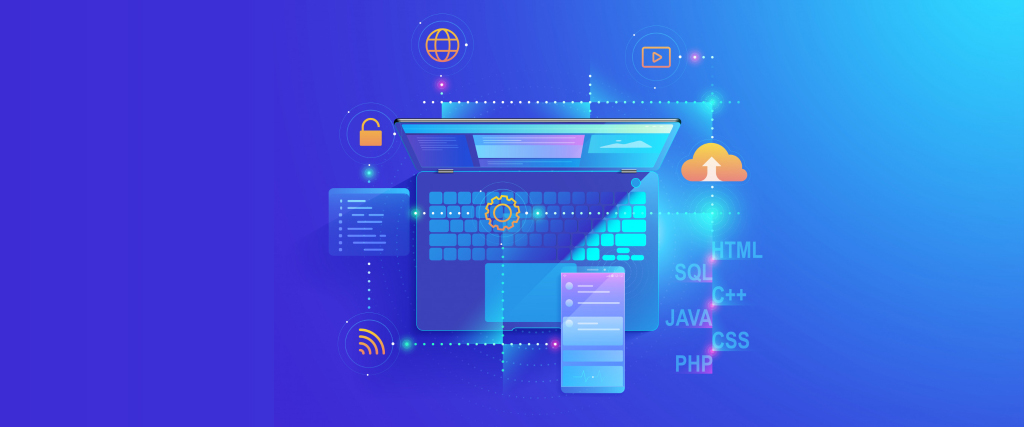Software Development Model: Which One To Choose For Your Business In 2021?

Software development is a highly complex process. Software development methodologies - software development life cycle - have been designed to simplify it. The software development model is nothing but different product organization methods for your software development workflow. It helps find errors in software development before discovering them in successive stages. When it comes to a mobile app development project, you may find several methodologies in the market. All software creation models have several strengths and limitations and work differently in different situations. So, if you want to handle your specific software development project effectively, you need to select a suitable software development model that will provide a smooth development solution. But, now the main concern is which software development methodology is right for your business in 2021? Here are the top 4 SDLC models with pros and cons that will help you select the right one for your business in 2021.
Top 4 Software Development Model With Benefits and Drawbacks
From the versatile software development methodologies list, let’s start with the four most popular models to look for in 2021.#1 - Agile
Agile software development is a model used to design a process of successful software management that often allows the development project to shift daily. This approach for software development is a systematic structure for conducting different projects in software creation projects. Benefits of Agile:- The agile methodology delivers high-quality results as small iterations include easy tests and maintenance with more minor errors.
- It allows for creative improvements and changes while working on a software product.
- It is adaptive with low dependence on initial documentation.
- Software costing and budgets are well-planned.
- Due to the focus on clarity, there are regular interactions and communication amidst the client and developers of the production process leading to a good working relationship.
- Lack of clarity and project vision due to inconsistency in product specifications
- No set for strict deadlines. Changes in specifications and needs mean no precise estimate deadlines for project completion.
- The challenge of estimating the resources required for a project
- Unexpected modifications make it difficult to estimate the costs and resources.
- Lacks efficiency in documentation
- Development iteration
- QA iteration
- Retrospective
- Scope adjustment
#2 - Waterfall
The Waterfall approach refers to a cascading Waterfall, also known as SDLC methodologies. The Waterfall method is widely used by operated teams who have good knowledge about the project. But, with the versatility and mobility of the modern approach, development professionals who don’t work in a gap can usually find better results with the Waterfall methodology. Benefits of Waterfall:- It is pretty straightforward with no complexity in use.
- It is based on the use-cases defined in the technical specification, so testing is simple.
- It saves time.
- It is an effective method for small projects, especially where requirements are well-defined.
- It has a fixed deadline for each of the development stages.
- Project maintenance doesn’t apply to this approach.
- The software only becomes functional at the last stage of the cycle.
- It is not applicable for projects that tend to have changed along the way.
- It is an ideal model only for small and medium-size projects.
- No edits or changes are allowed once a project advances to the testing stage.
- Requirements
- System design
- Development
- QA
- Deployment & maintenance
#3 - Prototyping
Prototyping is the product development approach that requires developers to build only the app prototype to show its features to consumers. Professionals imagine how it will work and demonstrate to investors or customers its purpose. If you want to develop the final mobile app, the developers make all the necessary adjustments in preparation. This model provides space for the comprehension of software development criteria and the execution of valuable market research. Benefits of Prototyping:- It allows for the identification of risks and errors correction at the initial stage of development.
- Professionals can quickly scale it with the clients’ anticipation.
- It is the best way to show the software product to a client or an investor.
- Requirements gathering and analysis are easy where the required document is absent.
- Constant modifications may lead to many designs and changes in the code which can slow down the workflow.
- The initial result is never a market-ready product.
- It covers the cost of a prototype.
- Determine objectives
- Develop / Refine / Demonstrate
- Test
- Implement
#4 - Lean
The lean methodology highlights the development of easily manageable apps as a technological progression. This approach is designed to build the software one-third of the time with a small budget and small volume of the essential workflow. It removes everything that doesn’t contribute many advantages to the test-driven development process. Benefits of Lean:- It is efficient for budget control.
- It allows the team to speed up the development project.
- It empowers the development team, motivating them to build severe decision-making abilities.
- All decisions must be accurate and final to benefit from time and budget.
- Flexibility is limited to avoid unwanted alteration and time loss to keep the project focused on the plan.
- Teamwork and advanced skills are necessities for the success of this model.
- Identify value
- Map the value stream
- Create flow
- Establish pull
- Continuous improvement
